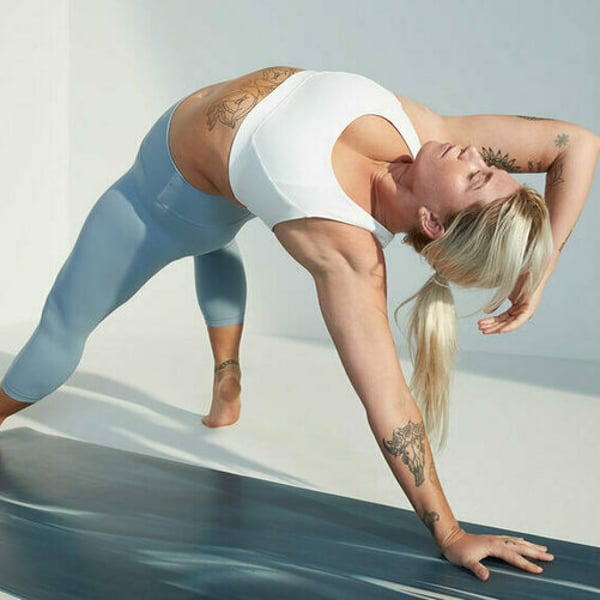By
Bloomberg
Published
Nov 3, 2023
Athleisure company Lululemon Athletica Inc.’s soaring Wall Street success is happening at the same time as lingerie retailer Victoria’s Secret Co. stumbles through yet another turnaround plan to stay afloat. The decline of a brand that turned everyday panties and bras into chic undergarments should serve as a cautionary tale to one that has transformed gym clothes into fashion. As Lululemon embarks on a new chapter as a company in the S&P 500, it should be careful not to become too overconfident and lose touch with how athletic wear and the picture of health and fitness evolve.
Formerly owned by L Brands Inc., Victoria’s Secret’s fall can be attributed to underestimating the influence of the internet on shopping behaviors and women’s body image — all of which has been well documented. At one point, the company sold one out of every four bras to women under 30 years old in the US. It overtook the market with rather restrictive bras designed with a freakishly unattainable and exclusionary feminine body ideal in mind.
That’s not so different from Lululemon’s story in athletic wear. It built its business around selling $100 leggings to middle and upper income women who can afford them. In practice, that led to allegations that some of its store employees shamed larger-bodied people shopping in its stores and its former Chief Executive Officer Chip Wilson outright saying that its clothes “don’t work” for bigger bodies.
Over the last few years, Lululemon has come a long way from its fat-shaming days. It extended its sizing in 2020, partnered with a fat long distance running coach and influencer on a body inclusive campaign and has added mid-sized mannequins sporting its bralette and legging sets and a number of mid-size models advertising their clothes on the website.
But these efforts don’t go far enough to clear itself from the same pitfalls that sunk Victoria’s Secret. It’s facing a different retail landscape than the iconic lingerie brand back in its heyday. For one, the athleisure market is fractured across dozens of brands including Nike Inc., Outdoor Voices, and TechStyle Fashion Group’s Fabletics — all of which offer a broad range of sizes at a lower price point. Victoria’s Secret held down the lingerie market for years until newcomers such as direct-to-consumer undergarment brand ThirdLove and Rihanna’s Savage X Fenty came onto the scene with concepts that centered bodies across the spectrum.
Then there is the rise of “dupe” culture, where shoppers seek out cheaper alternatives for premium or luxury brands, has also fueled a shopping rush for knockoffs on marketplaces including Amazon.com Inc. That’s a big risk for Lululemon, whose patents and exclusive intellectual property rights over its product technology, fabrics and processes are limited. The patents are generally owned or controlled by their suppliers and not unique to Lululemon, the company said in its 2022 annual report. So far the company has obsessively kept its elevated brand value among shoppers. Its high-end image is its most distinctive competitive edge. Sure, you can buy a dupe of Lululemon leggings or cotton crop top, but it won’t be real Lululemon. But if young shoppers increasingly look to save money and don’t care about the small logo of the brand adorning their workout gear, the company’s luck could run out.

Last, but certainly not least, are the signs of the company creeping closer to saturation of the US athleisure market. Like Victoria’s Secret once did, Lululemon currently dominates sales in its industry making up 59% of transactions in the third quarter of this year, according to Bloomberg’s Second Measure. In the last three months of 2022, the country’s adult active apparel industry decreased revenue by 5% compared to the same period last year, Lululemon Chief Executive Officer Calvin Macdonald said in March earnings call, citing Circana market research. However, during that period, Lululemon gained 2.3 points of market share, he said. Taken together, this suggests the pot of money going toward athletic wear is shrinking while Lululemon’s slice is increasing. That’s great news for a growing company such as Lululemon. But at some point, it will hit a plateau.
To sustain its cultural influence, the business will have to keep up with body acceptance trends in a meaningful way. And they have choices of how to do that. For instance, it can follow Athleta’s footsteps and create a design partnership — a step further than a marketing collaboration— with an athlete or influencer. Simone Biles ditched her Nike partnership in 2021 for Athleta to have greater control over her line of products. Lululemon can work with fat fitness influencers and athletes to create new products from the bottom up that are designed with larger bodies in mind. Shoppers have complained that apparel brands simply just add additional fabric to their straight sized designs rather than take the time to alter their structure to flatter larger bodies. These steps could go far in showing that Lululemon is not just pandering to the body positive movement, but responding to their customers’ evolving needs.
All said, Lululemon is nowhere near a cool down. But that doesn’t mean it can afford any cheat days.







